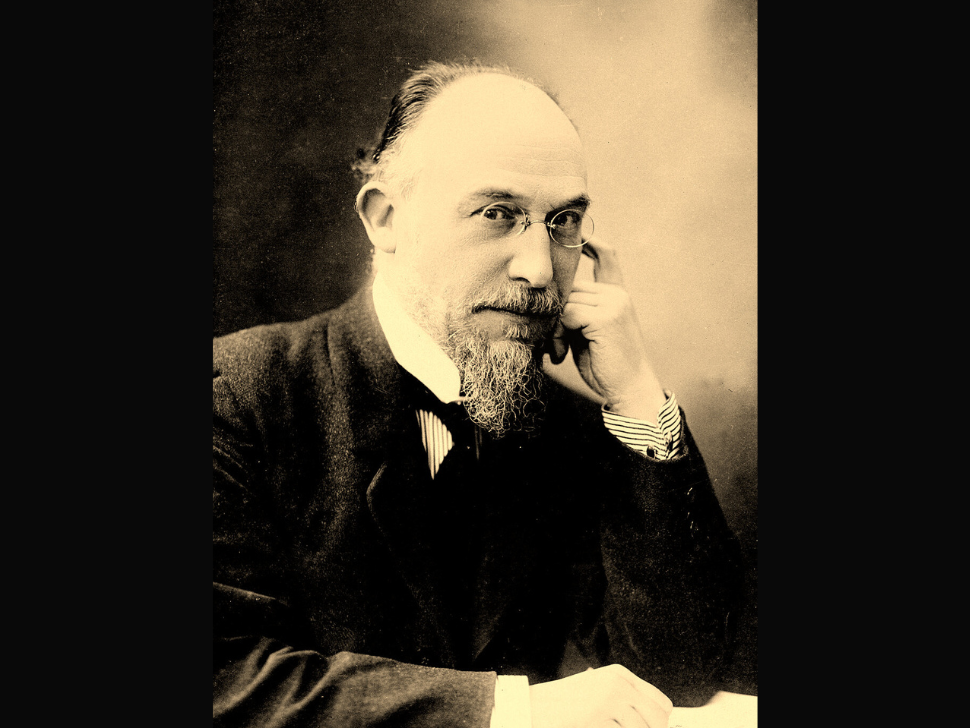![]()
Lost and Found: 27 Unheard Works by Erik Satie Unearthed in Landmark Album Release
To mark the 100th anniversary of Erik Satie’s death, pianist Alexandre Tharaud has released a remarkable new digital album featuring 27 previously unknown works by the eccentric and influential French composer. Titled Satie: Discoveries, the album sheds new light on a musical figure whose legacy, though revered, remains shrouded in mystery.
Hidden in the Archives
The project is the result of painstaking research by Japanese composer and violinist Sato Matsui and British musicologist James Nye. Working independently, the pair discovered forgotten manuscripts and incomplete sketches in two surprising locations: the Bibliothèque nationale de France and a private archive in Boston. Through careful reconstruction, they transformed these fragments into fully performable scores—some of which are set to be published by Éditions de la Fabrique Musique.
“These discoveries allow us to hear Satie’s voice in new ways,” said Nye. “It’s like finding a hidden room in a house you thought you knew.”
A Broader Portrait of Satie
The album goes beyond the dreamy ambience of Gymnopédies and Gnossiennes to reveal a fuller picture of Satie’s musical imagination. Many of the rediscovered pieces were originally written for the lively, bohemian cafés of Montmartre, where Satie worked in the late 19th century. These include playful cabaret numbers like Le Champagne, Pousse l’amour, and Chanson andalouse—songs bursting with the wit and charm that made Satie a cult figure among Paris’s avant-garde.
Also on the album are more experimental and introspective compositions such as the Esquisses bitonales (Bitonal Sketches) and Soupirs fanés (Faded Sighs), a series of miniatures with characteristically oddball titles like Poil (Hair), Barbouillage (Daubings), Familial désespoir (Domestic Despair), and Souvenirs fadasses (Dusty Memories).
A Collaborative Effort
While most tracks are solo piano, Tharaud collaborates with Serbian violinist Nemanja Radulović on three pieces where the original vocal lines have been lost. These reinterpretations breathe new life into works that may have otherwise remained silent.
The album also includes fresh takes on two known compositions: Chinese Conjuror from Satie’s ballet Parade, performed here as a piano duet with Gautier Capuçon, and Cancan Grand-Mondain from La Belle Excentrique, newly arranged for solo piano by Tharaud.
Satie, the Enigma
“Satie remains very much an enigmatic figure today,” said Tharaud. “He is held in enormous regard, yet remains largely misunderstood. It is up to us to look beyond the Gnossiennes and the Gymnopédies, to try our sincere best to get closer to the music and to pay real attention.”
Indeed, Satie’s idiosyncrasies extended far beyond his compositions. In his absurdist memoir Memoirs of an Amnesiac, he claimed to only eat white foods and detailed a comically rigid daily schedule: “I rise at 7:18; am inspired from 10:23 to 11:47. I lunch at 12:11 and leave the table at 12:14…”
Dismissed by many in his lifetime, Satie is now recognized as a forerunner of minimalism and surrealism—his music a strange and singular voice in the transition from Romanticism to modernism.
A Legacy Reimagined
Released digitally on June 27, 2025, just days ahead of the July 1st centenary of Satie’s death, Satie: Discoveries offers a rare glimpse into the lesser-known corners of his musical world. More than a historical curiosity, this collection invites a reappraisal of a composer whose influence has never quite faded—and whose eccentric spirit continues to surprise, 100 years on.
